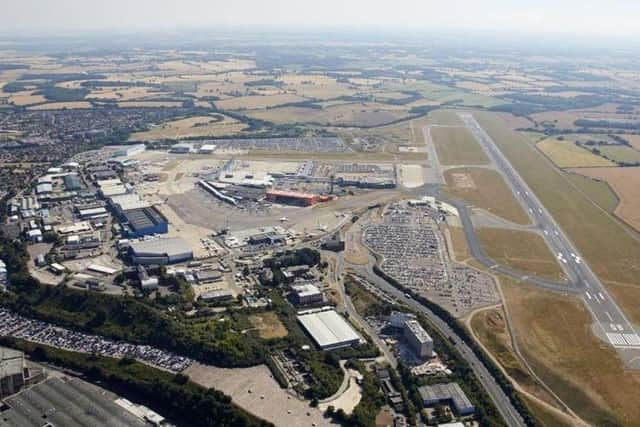Consultation on Luton Airport arrival routes changes sees more than 2,400 responses
and live on Freeview channel 276
A report summarising the feedback received by the consultation on proposed changes to arrival routes into London Luton Airport (LLA) has been published today (Thursday).
More than 2,400 people and organisations responded to the consultation, which ran from October 2020 to February 2021. Their feedback has been collated, categorised and reviewed to help inform the final design.
Advertisement
Hide AdAdvertisement
Hide AdThe consultation proposed a new aircraft hold for Luton Airport above the St Neots and Huntingdon area, along with separate routes "further out and higher up". This is to ensure its operations don’t clash with Stansted. The joint consultation, co-sponsored with air traffic control provider NATS, looked at two options:


> Option one focuses upon higher altitude arrival routes from the new hold, with the latest air navigation technology (Performance Based Navigation - PBN) at altitudes of around 8,000ft and above to separate Luton's arrivals from Stansted’s.
> Option two, described as the "preferred" choice, offers the same but with added "pre-determined" routes spread out to wider areas outside Luton.
Some of the main points from the feedback that may influence the final design include:
Advertisement
Hide AdAdvertisement
Hide Ad> Concerns about the position of a new hold exclusively for LLA traffic
> Noise impacts below 8,000ft, which includes consideration of preferences expressed for the two options on which LLA and NATS consulted
> Any increase in the use of aviation fuel
> Impacts on other airspace users, by reducing the requirement for controlled airspace while still enhancing safety, and by agreeing operational practices to mitigate airspace access impacts.
The Feedback Report includes full details of how the responses have been categorised and themed, which themes may affect the final proposal and which ones won’t, and why. It has been published on the CAA’s portal as required under the Airspace Change guidance process, CAP1616.
Advertisement
Hide AdAdvertisement
Hide AdThe next step is to complete a final design report, that uses this feedback to address the main points, followed by a full options appraisal. These three steps – the consultation, feedback report and final options appraisal – will complete Stage 4A of CAP1616, the “we asked, you said, we did” stages of the consultation process.
Following that, the final design proposal should be delivered to the CAA later this month (June 2021). Subject to CAA regulatory approval, the proposal is planned for implementation no earlier than February 2022.
In response to the restrictions in place because of Covid-19, the consultation had an increased online presence to still allow for engagement with the majority of stakeholders. More than 11,000 people visited the virtual exhibition during the consultation period and 10 live interactive broadcast webinars were held for the public to ask questions directly to subject matter experts.
To inform those members of the public who are not online, advertisements were placed in local newspapers and magazines and leaflets detailing the proposal, how to access paper consultation material and how to provide a postal response were offered to local representative groups.
Advertisement
Hide AdAdvertisement
Hide AdNeil Thompson, Operations Director at London Luton Airport, said: “We believe that the digital consultation resulted in greater engagement than would have been possible with more traditional methods, such as town hall meetings. Over 2,400 people and organisations were able to express their views and input into the proposal, which will duly influence the final design; and which we believe will prioritise safety as well as balancing the needs of the community and the environment.”
To follow the progress of this Airspace Change Proposal, check the CAA portal.
* While the consultation has been known as London Luton Airport Arrivals, on the CAA website the proposal is referred to by its technical name, ‘Swanwick Airspace Improvement Programme – Airspace Deployment 6’.